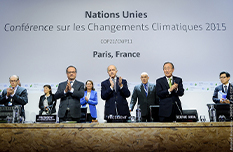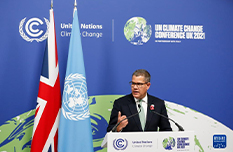The road to carbon neutrality
What is carbon neutrality?
Carbon neutrality refers to the total amount of carbon dioxide or greenhouse gas emissions directly or indirectly generated by a country, enterprise, product, activity or individual within a certain period of time. Offset the carbon dioxide or greenhouse gas emissions generated by itself, achieve positive and negative offsets, and achieve relatively “zero emissions”.
Why is carbon neutrality critical?
Global warming has led to higher and higher climate risks, and climate change is a global problem facing mankind. “To limit the increase in global average temperature to less than 2 degrees Celsius compared with the pre-industrial period, and strive to limit the temperature increase to 1.5 degrees Celsius.” This is the long-term goal of the Paris Agreement. Currently, Earth’s temperature is already about 1.1°C warmer than it was at the end of the 19th century, and emissions continue to rise. Carbon neutrality is both a realistic action goal and a far-sighted long-term development strategy.
How can carbon neutrality be achieved?
The transition to carbon neutrality is one of the greatest challenges facing humanity. It requires us to completely change the way we produce, consume and act. The energy sector is responsible for about three-quarters of today’s greenhouse gas emissions and is key to avoiding the worst impacts of climate change. Replacing polluting coal, natural gas and oil power generation with renewable energy sources such as wind or solar would significantly reduce carbon emissions.
Are we on track to be carbon neutral by 2050?
No, the commitments governments have made so far fall far short of what is required. Current national climate plans—all 193 parties to the Paris Agreement taken together—will lead to a dramatic increase of nearly 14 percent in global greenhouse gas emissions by 2030 from 2010 levels. Achieving carbon neutrality requires all governments – starting with the largest emitters – to significantly strengthen their nationally determined contributions and take bold and immediate steps to reduce emissions. The Glasgow Climate Pact calls on all countries to revisit and strengthen the 2030 target of their Nationally Determined Contributions by the end of 2022 to align with the Paris Agreement temperature targets.

2015
196 countries have adopted the historic Paris Agreement to slow climate change and increase their resilience to climate change. The overall goal of the Paris Agreement is to limit global warming to 1.5 degrees Celsius.

2015-2017
196 countries have adopted the historic Paris Agreement to slow climate change and increase their resilience to climate change. The overall goal of the Paris Agreement is to limit global warming to 1.5 degrees Celsius.

2020-2021
Ahead of climate talks at the 26th Conference of the Parties to the United Nations Framework Convention on Climate Change, countries are beginning to revise their Nationally Determined Contributions to enhance climate action. As scientific research confirms that the window of opportunity is shrinking, plans must incorporate urgently needed action to reduce carbon emissions and achieve “net zero” by 2050.

2030
To keep global warming below 1.5 degrees Celsius, countries must reduce emissions by at least 45 percent from 2010 levels.

2050
The transition to “net zero emissions” must be completed.
